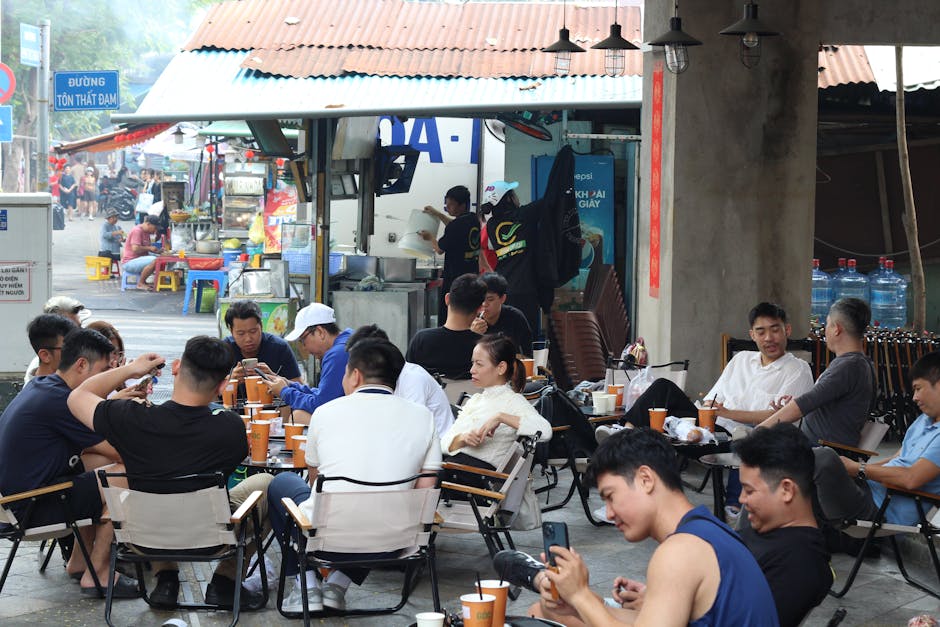ZUS Coffee’s Strategic Expansion in Southeast Asia: A Disruptive Force in the Coffee Market

ZUS Coffee’s Strategic Expansion in Southeast Asia: A Disruptive Force in the Coffee Market
In the rapidly evolving coffee market of Southeast Asia, ZUS Coffee, a burgeoning powerhouse from Malaysia, stands out through its aggressive expansion strategy and technological innovation. Having surpassed global giants like Starbucks in Malaysia by operational scale, ZUS Coffee is now setting its sights on broader regional dominance with planned openings across Thailand, Indonesia, the Philippines, Singapore, and Brunei. This strategic move is not just reshaping competitive dynamics but also redefining consumer expectations in the specialty coffee sector.
Understanding ZUS Coffee's Market Disruption
Aggressive Expansion: With plans to open 200 new stores by 2025, ZUS Coffee's approach is robust and clear. The brand’s venture into Thailand and Indonesia, alongside further expansions in existing markets, demonstrates a fearless approach to capturing market share in both saturated and growing markets. Bloomberg's recent coverage outlines the strategic locations and potential market impacts of these new openings.
Technology and Innovation: At the heart of ZUS Coffee’s strategy is a technology-driven business model, where approximately 70% of sales are conducted online. This digital-first approach not only differentiates ZUS from traditional coffee shops but also aligns perfectly with the pandemic-induced shift towards online ordering and delivery.
Competitive Edge in a Crowded Market
To maintain its foothold and grow, ZUS Coffee has tailored its business practices to ensure it stays ahead. Price Positioning: By setting prices about 20% lower than its key competitors, ZUS opens up its market to a broader demographic. This smart pricing strategy, combined with cost-effective store construction, allows ZUS to offer quality coffee without the luxury pricing tag.
Localized Offerings: Understanding regional tastes and preferences allows ZUS to connect more deeply with customers. For instance, the introduction of palm sugar-flavored drinks in Malaysia and purple yam coffee in the Philippines speaks directly to local tastes, giving ZUS a significant edge over more standardized global offerings.
Comparative Analysis with Global Brands
Unlike global giant Starbucks, which focuses on premium lifestyle branding, ZUS Coffee positions itself within the affordable quality segment, effectively tapping into a larger, price-sensitive consumer base. Furthermore, while brands like Blue Bottle cater to niche, premium segments, ZUS’s strategy of mass appeal through technology-led convenience and localized flavors ensures it captures and retains a diverse customer base.
“In the race for market dominance, the blend of localized offerings, aggressive pricing, and tech-enabled services brews a new era of coffee culture in Southeast Asia, driven by ZUS Coffee’s innovative strategies.”
Future Perspectives and Strategic Importance
The rapid expansion and unique market positioning of ZUS Coffee highlight a significant shift in how companies are harnessing technology and local consumer insights to drive growth. As ZUS continues to expand its digital capabilities and refine its customer engagement strategies, it not only enhances its competitive edge but also sets new standards in the coffee industry.
Market Growth Opportunities: With the Southeast Asian coffee market expected to grow at a CAGR of 6.2% through 2029, ZUS Coffee is well-positioned to leverage emerging market dynamics. The focus on younger consumers and the integration of technology such as gamified loyalty programs or app-based ordering systems are pivotal in capturing the digitally-savvy generation.
Challenges Ahead: Despite its rapid growth, ZUS Coffee faces challenges like saturated markets and the need for continuous innovation to maintain local relevance and high quality at scale. Navigating these challenges while maintaining strategic focus will be crucial for sustained success.
Conclusion
ZUS Coffee’s trajectory in the Southeast Asian coffee market is not just a story of business expansion but a case study in strategic innovation and market adaptation. As the brand continues to challenge conventional market norms and consumer expectations, its journey offers valuable insights into the evolving landscape of global coffee culture and consumer behavior. With its finger firmly on the pulse of technological innovation and market dynamics, ZUS Coffee is set to redefine the reach and influence of modern coffee chains in Asia and beyond.
